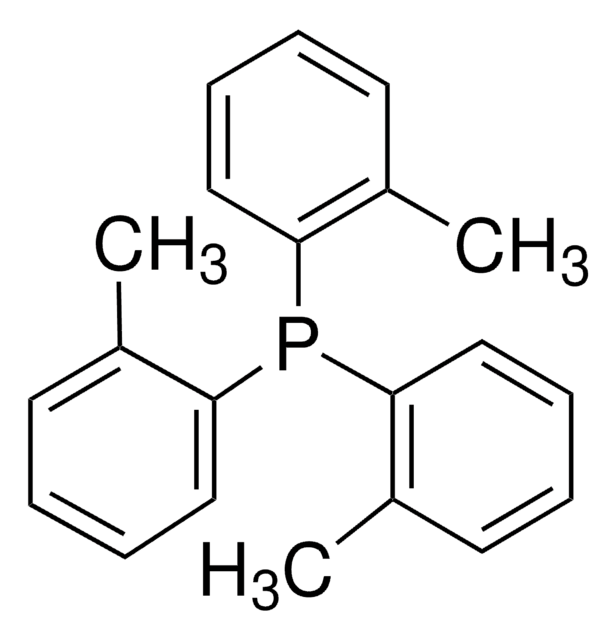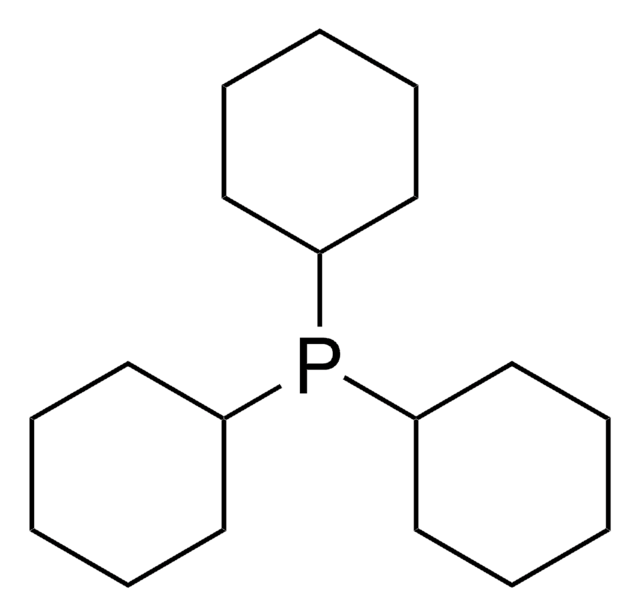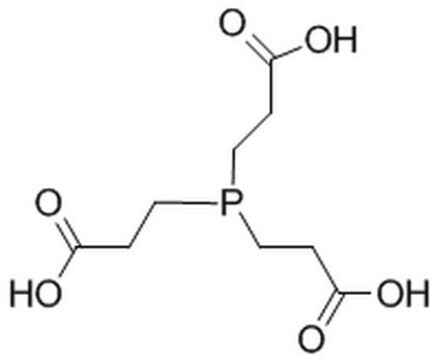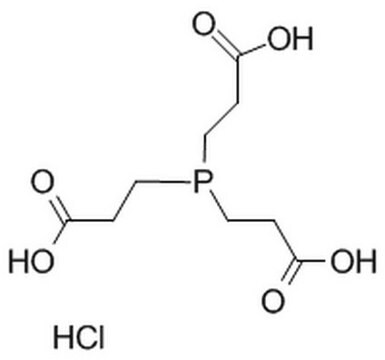Alle Fotos(3)
Wichtige Dokumente
777854
Tris(hydroxypropyl)phosphine
≥80%
Synonym(e):
THPP
Anmeldenzur Ansicht organisationsspezifischer und vertraglich vereinbarter Preise
Alle Fotos(3)
About This Item
Empirische Formel (Hill-System):
C9H21O3P
CAS-Nummer:
Molekulargewicht:
208.24
MDL-Nummer:
UNSPSC-Code:
12352128
PubChem Substanz-ID:
NACRES:
NA.22
Empfohlene Produkte
Qualitätsniveau
Assay
≥80%
Form
liquid
Eignung der Reaktion
reagent type: reductant
Dichte
1.136 g/mL at 25 °C
SMILES String
OCCCP(CCCO)CCCO
InChI
1S/C9H21O3P/c10-4-1-7-13(8-2-5-11)9-3-6-12/h10-12H,1-9H2
InChIKey
YICAEXQYKBMDNH-UHFFFAOYSA-N
Verwandte Kategorien
Allgemeine Beschreibung
Tris(hydroxypropyl)phosphine (THPP) is a reducing agent widely used for the reductive cleavage of disulfide bonds in small molecules in both aqueous–organic media.
Anwendung
Tris(hydroxypropyl)phosphine can be used:
- As a reducing agent in the reduction of dehydroascorbic acid to ascorbic acid
- In the cleavage of disulfide bonds in small molecules
- As a catalyst in the conversion of polysulfides
Signalwort
Danger
H-Sätze
Gefahreneinstufungen
Skin Corr. 1B
Lagerklassenschlüssel
8A - Combustible corrosive hazardous materials
WGK
WGK 3
Flammpunkt (°F)
Not applicable
Flammpunkt (°C)
Not applicable
Hier finden Sie alle aktuellen Versionen:
Besitzen Sie dieses Produkt bereits?
In der Dokumentenbibliothek finden Sie die Dokumentation zu den Produkten, die Sie kürzlich erworben haben.
Kunden haben sich ebenfalls angesehen
Hairong Wang et al.
Biomaterials, 181, 310-317 (2018-08-11)
Tumor hypoxia is known to be one of critical factors that aggravate the tumor resistance to photodynamic therapy (PDT) in which oxygen is essential for tumor destruction. Herein, catalase, an enzyme to trigger hydrogen peroxide (H2O2) decomposition, is modified by
Victoria J Valerón Bergh et al.
Pharmaceutical development and technology, 23(8), 761-770 (2017-04-01)
Dry alginate foams intended for antibacterial photodynamic therapy (aPDT) of infected wounds were prepared. aPDT is a treatment modality involving light of appropriate wavelength, oxygen and a photosensitizer (PS) to produce radicals that attack biological targets (e.g. bacteria). The hydrophobic
Cyrille Megel et al.
Nucleic acids research, 47(2), 941-952 (2018-11-22)
RNA fragments deriving from tRNAs (tRFs) exist in all branches of life and the repertoire of their biological functions regularly increases. Paradoxically, their biogenesis remains unclear. The human RNase A, Angiogenin, and the yeast RNase T2, Rny1p, generate long tRFs
Kristine Opsvik Wikene et al.
Journal of photochemistry and photobiology. B, Biology, 171, 27-33 (2017-05-05)
Natural deep eutectic solvents (NADES) are a third class of liquids, separate from water and lipids. Some NADES, especially those containing organic acids, have been suggested to possess antimicrobial properties. Such properties may be advantageous when NADES are used as
Designing dendritic polymers containing phosphorus donor ligands and their corresponding transition metal complexes.
Dasgupta M, et al.
Coordination Chemistry Reviews, 233(19), 223-235 (2002)
Unser Team von Wissenschaftlern verfügt über Erfahrung in allen Forschungsbereichen einschließlich Life Science, Materialwissenschaften, chemischer Synthese, Chromatographie, Analytik und vielen mehr..
Setzen Sie sich mit dem technischen Dienst in Verbindung.



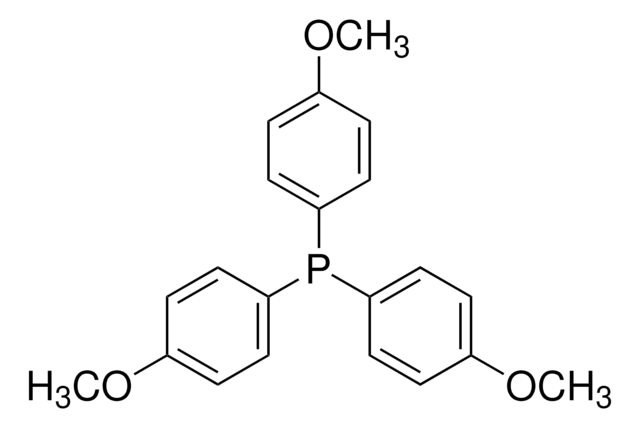
![1,3,5-Triaza-7-phosphatricyclo[3.3.1.13.7]decan 97%](/deepweb/assets/sigmaaldrich/product/structures/101/883/9fb92027-f8be-41b8-abd5-232e7cac2696/640/9fb92027-f8be-41b8-abd5-232e7cac2696.png)
